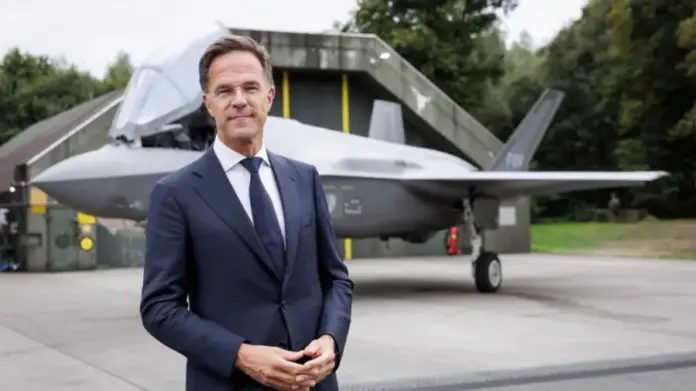NATO launched at the beginning of this week its annual nuclear deterrence exercise, known as “Steadfast Noon” — a long-planned training activity that takes place every year and is not linked to current geopolitical events. Conducted primarily at Volkel Air Base in the Netherlands, the exercise is a key component of the Alliance’s strategy to maintain readiness and transparency regarding its nuclear posture.
On October 10, 2025, NATO Secretary General Mark Rutte announced the Alliance’s annual nuclear deterrence exercise, Steadfast Noon.
“We will see aircraft, like the very impressive Dutch F-35A behind me, participating in the exercise, along with aircraft from all over the Alliance. It is important to say that this exercise takes place yearly. It is a yearly training and it is regular. And we need to do this because it helps us to make sure that our nuclear deterrent remains as credible and as safe and as secure and as effective as possible,” Rutte said from Volkel Air Base.
“It also sends a clear signal to any potential adversary that we will and can protect and defend all Allies against all threats. I really want to say to all participants, lots of success in the exercise. Great that you do this, it is very important.”
The Netherlands is the host nation for this year’s Steadfast Noon. Volkel Air Base will serve as the primary location, with supporting elements at Kleine-Brogel Air Base in Belgium and RAF Lakenheath in the United Kingdom. Additional conventional support operations will take place at Skrydstrup Air Base in Denmark.
The exercise involves around 70 aircraft from 14 Allied nations, including a mix of conventional and dual-capable aircraft. Supporting assets include surveillance, air-to-air refuelling, and command-and-control aircraft.
According to U.S. Air Force Colonel Daniel Bunch, Chief of Nuclear Operations at Supreme Headquarters Allied Powers Europe (SHAPE), organizing and executing such an exercise is a complex Allied effort:
“All in all we are looking at roughly 2,000 personnel directly supporting this exercise,” he said.
Jim Stokes, NATO’s Director of Nuclear Policy, emphasized that the exercise promotes openness and understanding:
“It’s about promoting transparency when and where appropriate, so that our Allied populations and the wider world have a good understanding of what we are doing.”
Each year, participation in Steadfast Noon rotates among NATO Allies. The exercise does not involve live nuclear weapons, focusing instead on strengthening cooperation, procedures, and readiness across Allied air forces in nuclear deterrence scenarios.
Why It Matters
Maintaining Allied readiness.
Steadfast Noon is an annual training designed to test procedures, coordination, and interoperability among NATO members in the context of a potential nuclear operation. The exercise rehearses the safe transport, handling, and protection of nuclear weapons using training replicas, not real warheads.
Reinforcing nuclear deterrence credibility.
Deterrence only works if potential adversaries believe NATO can and is prepared to respond. Exercises like Steadfast Noon demonstrate that Allied nuclear forces are operational, reliable, and secure. Although nuclear weapons are simulated rather than deployed, the event is announced publicly to avoid misperceptions or unnecessary escalation. NATO underscores that no real weapons are used, highlighting the defensive and routine nature of the activity.
Coordinating nuclear-sharing nations and sending a strategic message.
Countries that do not possess nuclear weapons — such as Germany, Belgium, the Netherlands, or Italy — participate through training missions under nuclear-sharing agreements, reinforcing solidarity among Allies and ensuring joint readiness within the Alliance’s collective defense framework.



